By Dr Chong Kian Chun, Consultant Orthopaedic Surgeon, Changi Sports Medicine Centre
The anterior cruciate ligament or ACL is one of the important ligaments located in the knee joint. It connects the thigh bone (femur) to the shin bone (tibia). It prevents the tibia from abnormal front sliding on the femur, and abnormal rotation of the femur upon the tibia. The ACL is critical for maintaining the stability of the knee as it moves through the range of motion, during sudden starts and stops, and various cutting and pivoting manoeuvers in athletic activities.
What is an ACL injury?
The ACL is commonly injured in sporting activities from direct contact, for instance during tackle in soccer, or non-contact, such as bad footing in a pot-hole while running on the pitch. Many athletes describe a sensation of the knee joint shifting out of place temporarily at the time of injury. This may be accompanied with a loud pop as the ligament ruptures. There will usually be painful swelling in the knee joint due to self-limiting bleeding in the joint, and the athlete is usually unable to return to play because of the painful limp in the affected leg.
What should I do?
Here are some useful measures to take after an acute knee injury:
- Discontinue play.
- Put an ice pack on the knee for 20 to 30 minutes every 2 to 3 hours. Continue this for the first 3 to 5 days to relieve the pain, and to control the swelling.
- Elevate the injured leg.
- Avoid walking around with a painful limp. Use a pair of crutches for balancing and to help take some weight off the injured leg.
- Consult a doctor.
How is an ACL injury diagnosed?
To diagnose and treat your acute knee injury, a visit to the doctor will be useful. Your doctor may do the following:
- Examine the knee to determine the extent of the injury. If your knee is too painful to allow for a thorough examination, your doctor may schedule a return visit in the next week or two when the pain and swelling has settled down.
- Insert a needle into the injured knee joint to aspirate the blood to relieve the pain and swelling.
- Order an Xray to look for the presence of bony injury around the knee.
- Prescribe some anti-inflammatory medications to help with the pain and swelling.
The clinical examination will usually be adequate to detect "looseness" in the knee and diagnose a tear in the ACL. An MRI examination may be useful at times to detect injuries to the other ligaments, the cartilage covering the knee joint, and the menisci (which are specialized cartilage for shock absorption in the knee).
How is it treated?
The initial phase of treatment involves swelling and pain control using a combination of ice, medications, rest and walking aids. Once achieved, the next stage will see the athlete working to regain motion range in the injured knee, and muscle tone especially in the quadriceps muscle. Working with a physiotherapist at this stage may be useful to monitor the progress of recovery.
The aim of treatment is to allow the athlete to return to his chosen sport to the level he is able. Once the ACL is torn, it will not grow back and heal itself. Although the knee has lost an important stabilizer, the athlete may regain some control of stability in the knee through a rehabilitation programme. If this cannot be achieved, then surgical reconstruction of the ACL is an option to consider.
You may consider surgery if:
- You find that your knee is unstable and has feelings of giving way during daily or sporting activities.
- You are a young and active individual, and you are not willing to give up or scale back your athletic pursuits.
- You participate in high-demand sports at a competitive level that requires a stable knee for pivoting and cutting motions.
- There are associated injuries to other ligaments, cartilage or menisci in the knee.
Recurrent instability in the knee will cause subsequent damage to the cartilage and menisci, and result in early arthritis. It is best to discuss your treatment options with your doctor in person so that he can assess and tailor a plan to your specific expectations.
What is an ACL reconstruction?
It is an operation performed to recreate the ACL using a graft tendon to replace the form and function of the torn ligament. This graft can come from the patient himself, such as a hamstring tendon from the same leg or other leg, patella tendon etc. A second option is to take an allograft from a deceased donor. These allografts are commercially available and cleansed to minimize the risk of disease transmission.
Currently, this operation is usually performed as "key-hole" surgery using a specialized viewing camera and instruments to allow the surgeon to work in the knee joint with small skin incisions. The graft tendon will be positioned in the knee joint through drill holes in the femur and tibia, and fixed in position. In the same sitting, the surgeon will also examine the other knee joint structures such as the cartilage and the menisci for injury, and deal with them appropriately.
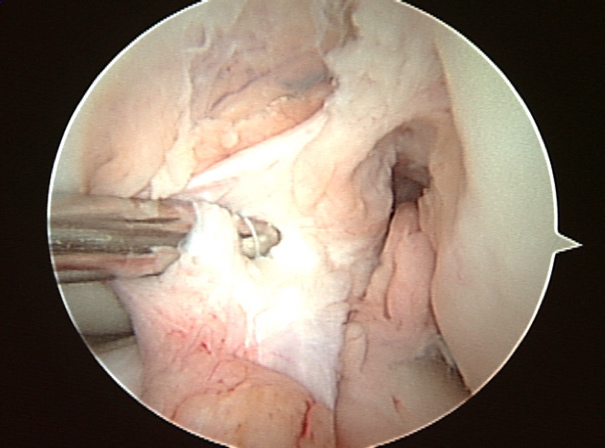
Intra-operative pictures showing a torn ACL in the knee.
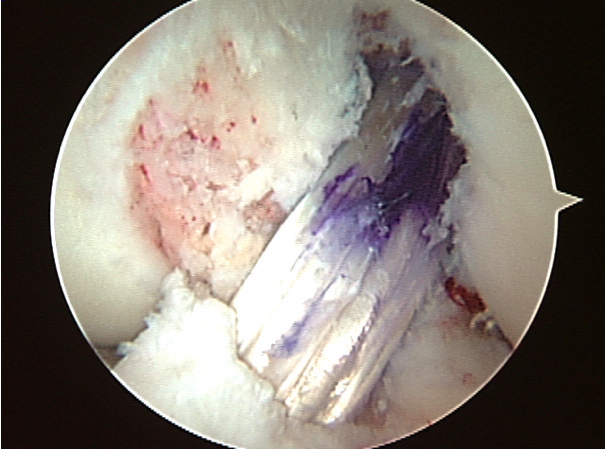
Post-reconstruction picture showing ACL graft in position.
What happens after surgery?
This is the time when the athlete’s involvement will determine the success or failure of the surgery. You will need to work closely with your physiotherapist and surgeon in your recovery. The lack of patient participation in the rehabilitation programme is a common cause of poor results and inability to return to sports following ACL surgery.
Immediately after surgery, there will be some pain and swelling in the knee. The initial management is similar to that of an acutely injured knee (see above). Once adequate swelling and pain control has been achieved, the athlete can start on the rehabilitation exercises. There will be various different phases in the programme, with specific emphasis for swelling and pain control, range of motion and muscle strengthening exercises, balancing and agility exercises, and sports-specific drills before you return to your sporting activity of choice.
Everyone recovers from injury and surgery at different rates. Your surgeon and therapist will keep an eye on you to make sure you are making satisfactory progress. Generally, most athletes can return to pivoting and cutting sports about six to nine months after their surgeries.
Changi Sports Medicine Centre (CSMC) is the largest multi-disciplinary sports medicine centre in Singapore. Set up by Changi General Hospital, it caters to both recreational and competitive athletes. Services include treatment of sports Injuries, injury prevention and performance enhancement, exercise testing and prescription for those with medical conditions, weight management and sports event medical coverage.

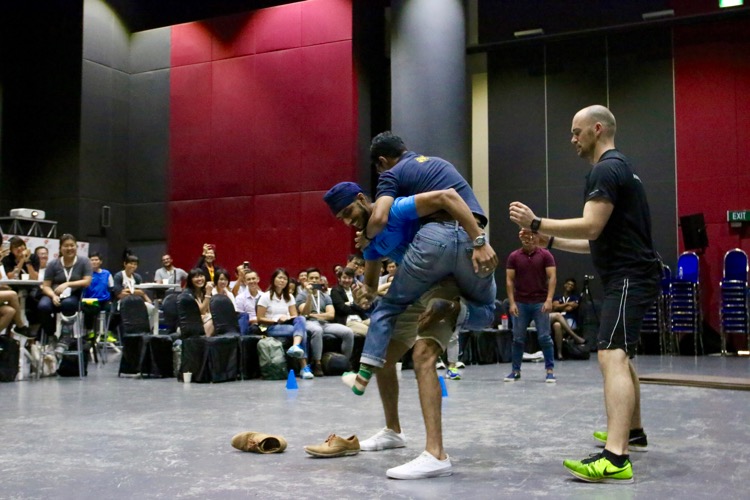

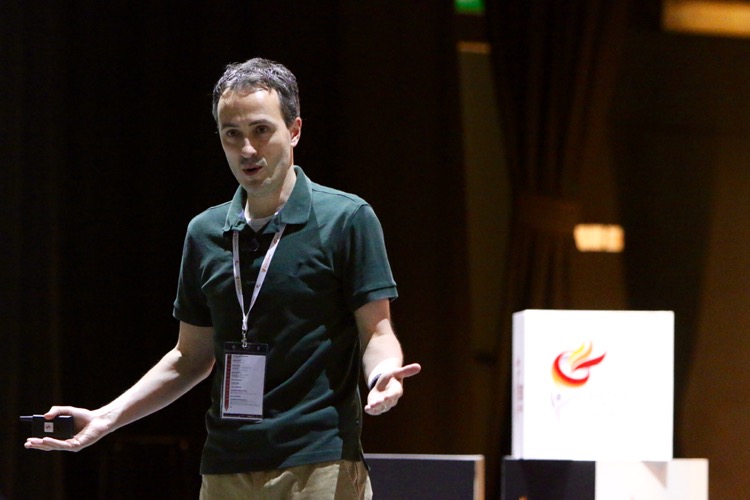
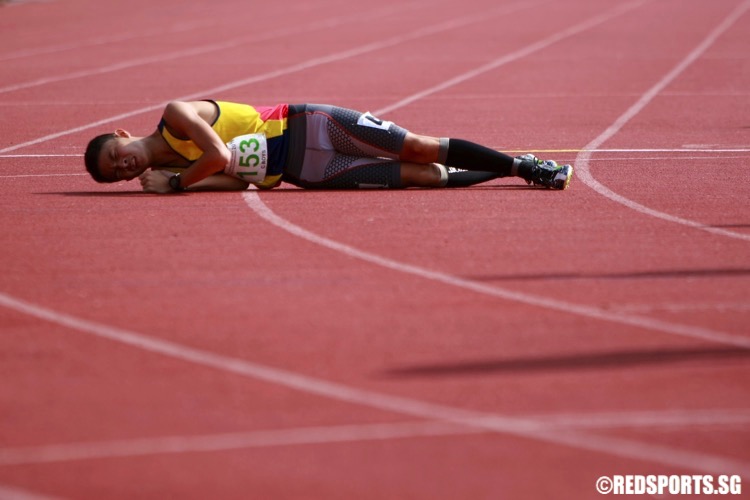
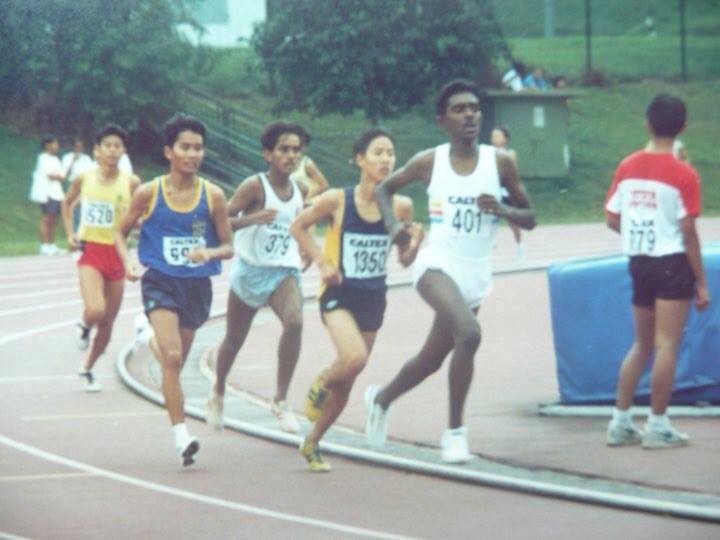
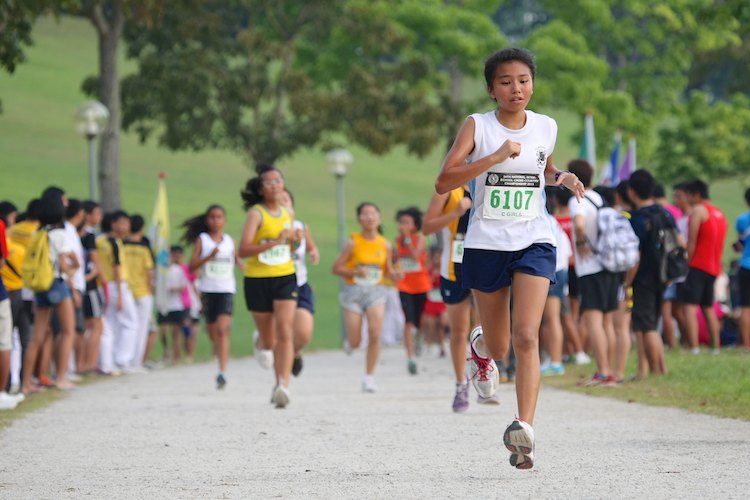
Leave A Comment